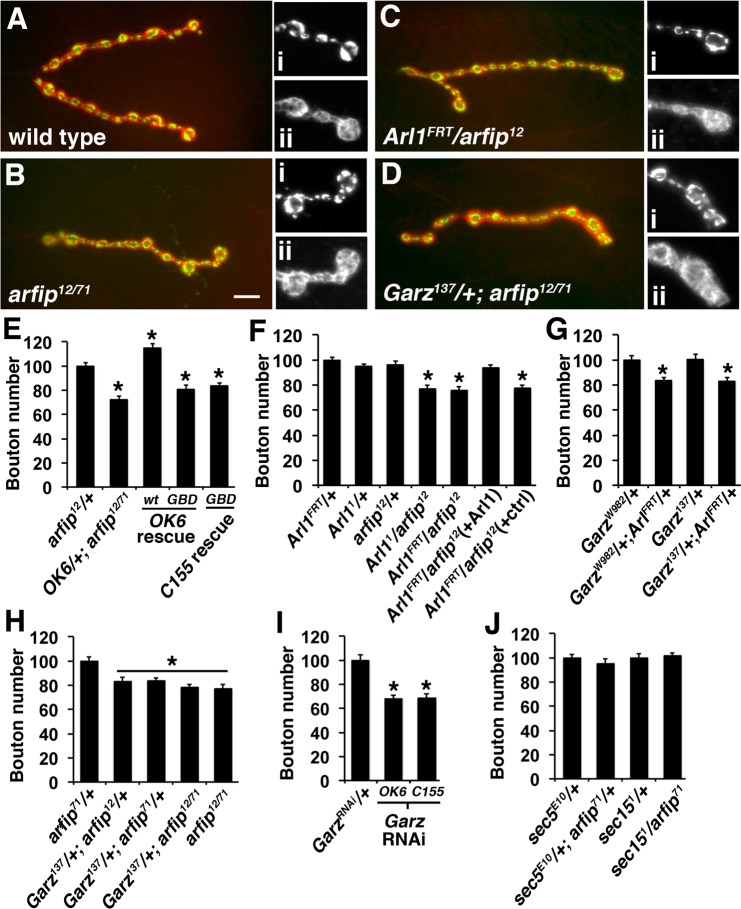Fig. 3.
Arl1, Garz, and Arfip function in the same genetic pathway during synapse growth. (A-D) Immunofluorescent images of the neuromuscular junctions (NMJs) formed on muscle 4 from larvae of the indicated genotypes co-stained for presynaptic VGluT (green; insets i) and postsynaptic Discs-large (Dlg) (red; insets ii). Insets are higher magnification images of the terminal boutons of the synapse shown. Scale bar=10 μm. (E-I) Graphs represent the average number of boutons at the muscle 4 NMJs normalized to control values. (E) The expression of wild type Arfip (wt) but not a GTPase-binding mutant Arfip (GBD) rescued synapse growth defects in arfip12/71 mutant neurons using either the Ok6-Gal4 (Ok6 rescue) or C155-Gal4 (C155 rescue). (F) Transheterozygotic genotypes consisting of Arl11 and arfip12, Arl1FRT and arfip12 have reduced synapse growth compared to heterozygotic Arl1 controls (Arl11/+ and Arl1FRT/+). Expression of the pUAS-Arl1-HA transgene in the Arl1FRT/arfip12 heterozygotic background using the OK6-Gal4 driver [Arl1FRT/arfip12 (+Arl1)] restores synapse growth to control levels compared to the control background harboring only the OK6-Gal4 driver [Arl1FRT/arfip12 (+ctrl)]. (G) Transheterozygotic genotypes consisting of Arl1FRT and garzW982 or of Arl1FRT and garz137 have reduced synapse growth compared to heterozygotic garz controls (garzW982/+ and garz137/+). (H) Transheterozygotic genotypes containing heterozygotic mutations in arfip (arfip12 or arfip71) and garz137 have reduced synapse growth compared to arfip/+. (I) The expression of a UAS construct encoding a dsRNA to garz (UAS-garzRNAi) in motor neurons using either the Ok6-Gal4 motor neuron driver or the C155-Gal4 panneuronal driver results in reduced synapse growth. (J) Transheterozygotic genotypes between mutations in arfip71 and the exocyst genes sec5E10 or sec151 have no effect on synapse growth. Error bars=s.e.m. *P<0.05; significant difference from controls by ANOVA.

